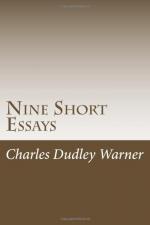There were no policemen in the garden, that I was certain of; but a little after half-past one I saw a Man, not a man I had ever seen before, clad in doublet and hose, with a short cloak and a felt cap with a white plume, come out of the Pavillon de Flore and turn down the quay towards the house I had seen that afternoon where it stood—of the beautiful Gabrielle d’Estrees. I might have been mistaken but for the fact that, just at this moment, a window opened in the wing of the same pavilion, and an effeminate, boyish face, weak and cruel, with a crown on its head, appeared and looked down into the shadow of the building as if its owner saw what I had seen. And there was nothing remarkable in this, except that nowadays kings do not wear crowns at night. It occurred to me that there was a masquerade going on in the Tuileries, though I heard no music, except the tinkle of, it might be, a harp, or “the lascivious pleasing of a lute,” and I walked along down towards the central pavilion. I was just in time to see two ladies emerge from it and disappear, whispering together, in the shrubbery; the one old, tall, and dark, with the Italian complexion, in a black robe, and the other young, petite, extraordinarily handsome, and clad in light and bridal stuffs, yet both with the same wily look that set me thinking on poisons, and with a grace and a subtle carriage of deceit that could be common only to mother and daughter. I didn’t choose to walk any farther in the part of the garden they had chosen for a night promenade, and turned off abruptly.
What?
There, on the bench of the marble hemicycle in the north grove, sat a row of graybeards, old men in the costume of the first Revolution, a sort of serene and benignant Areopagus. In the cleared space before them were a crowd of youths and maidens, spectators and participants in the Floral Games which were about to commence; behind the old men stood attendants who bore chaplets of flowers, the prizes in the games. The young men wore short red tunics with copper belts, formerly worn by Roman lads at the ludi, and the girls tunics of white with loosened girdles, leaving their limbs unrestrained for dancing, leaping, or running; their hair was confined only by a fillet about the head. The pipers began to play and the dancers to move in rhythmic measures, with the slow and languid grace of those full of sweet wine and the new joy of the Spring, according to the habits of the Golden Age, which had come again by decree in Paris. This was the beginning of the classic sports, but it is not possible for a modern pen to describe particularly the Floral Games. I remember that the Convention ordered the placing of these hemicycles in the garden, and they were executed from Robespierre’s designs; but I suppose I am the only person who ever saw the games played that were expected to be played before them. It was a curious coincidence that the little livid-green man was also there, leaning against a tree and looking on with a half sneer. It seemed to me an odd classic revival, but then Paris has spasms of that, at the old Theatre Francais and elsewhere.




